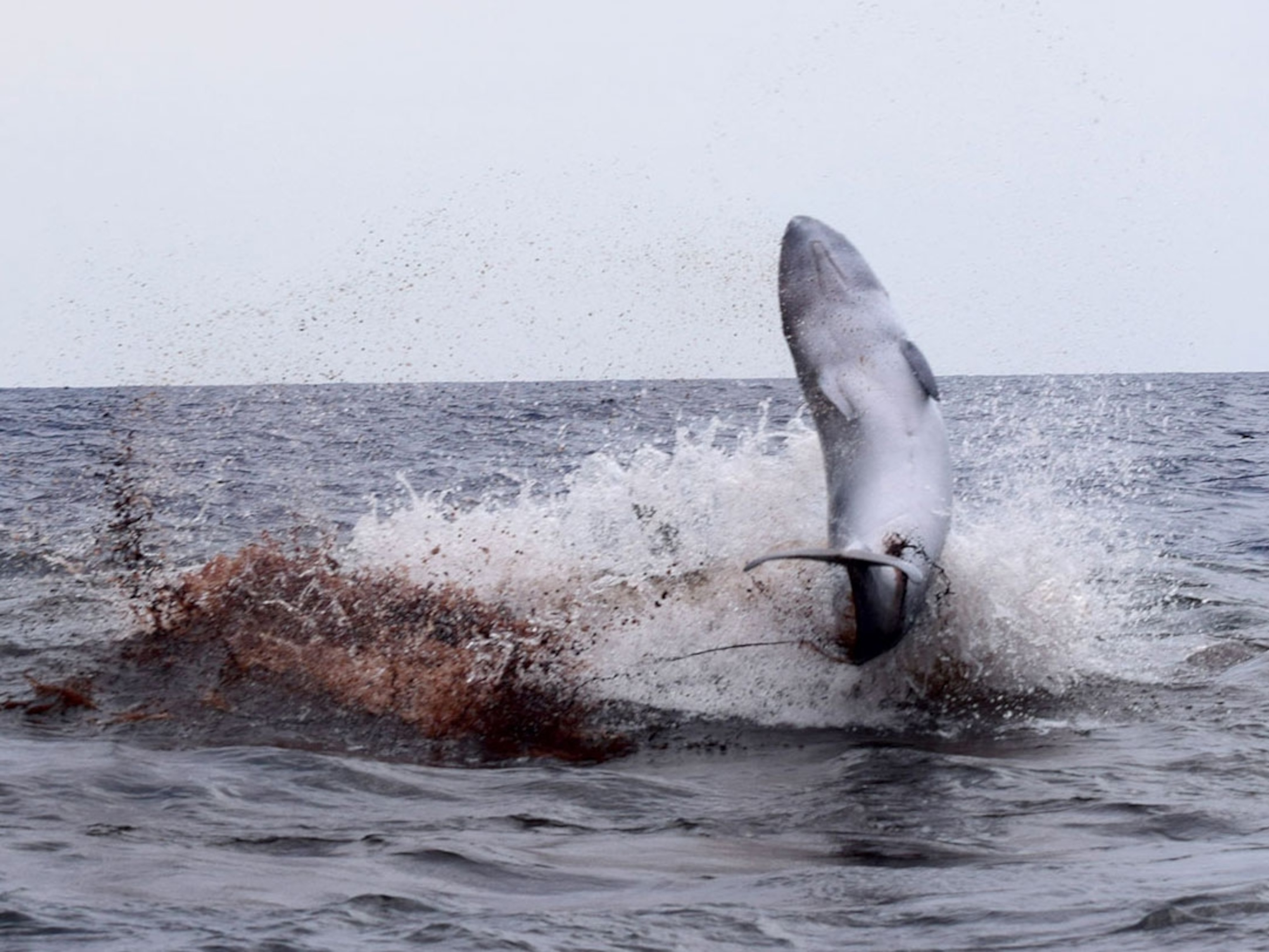
Humpback Whale Crittercam Video Reveals Bottom-Feeding Activity
New video footage shows that these marine mammals dine on the seafloor with their friends.
Humpback whales are known for their bubble nets. In Cape Cod Bay (map), the marine mammals spend the summer blowing bubbles in circles under the water and then lunging through roiling schools of fish for a mouthful of water and sand lance, a skinny, finger-length fish.
If you watched humpbacks only from the surface, you'd think that was how they got all their food. But a team of scientists has been putting tags on the whales to snoop on them underwater. They found something surprising: Humpbacks actually spend a lot of time feeding at the bottom. (Watch video of humpback whales blowing bubble nets.)
Computer scientist Colin Ware of the University of New Hampshire analyzed data from special electronic tags affixed to the whales' backs to see what they were up to down there. Rather than just circling around blowing bubble nets, the whales were spending a lot of time at the bottom.
Over and over, he saw that a whale would roll on its side, tilt its head down, and swim along just above the bottom. They weren't lunging through schools of fish the way they do higher up in the water, but he's sure they're feeding.
You can even see sand lance on the Crittercam, a video camera provided by the National Geographic Society to get an animal's-eye view. "Really, they're spending more time bottom-feeding than anything else," Ware says.
Tags That Suck
The data on how whales move underwater comes from a tag scientists affix to the back of a whale with a suction cup. "Tag" sounds like a little piece of plastic, but these are sophisticated machines.
One variety, known as a DTAG, is a white, hand-size device loaded with sensors that measure the whale's position and its angle in the water. The data it records can be used to make a track that looks like a three-dimensional ribbon, twisting and spiraling as the whale turns and dives.
The other tag researchers use is a Crittercam.
To get a tag on a whale, a scientist stands in the front of a small inflatable motorboat, holding a lightweight carbon-fiber pole longer than an SUV and a little wider than a paper towel roll. At the end of the pole is a tag and a suction cup.
The scientist watches the water, waiting for the whale to surface, and then smacks the tag down onto the animal's broad back. The suction cup sucks and the whale dives, taking its new cargo of scientific equipment along. Then the small boat and a larger research vessel follow that whale for the rest of the day as it dives and eats and surfaces, until the tag pops off at a pre-programmed time.
A New View
During Ware's analysis, he even found that the whales were eating with friends. One pair, known as Nile and Pepper, had DTAGs on at the same time. The data showed them rolling and turning along the bottom like synchronized swimmers. "It's quite possible a lot of them do that," Ware says. The research is published in the journal Marine Mammal Science.
Ari Friedlaender is a marine biologist at Duke University in Durham, North Carolina, a coauthor of the new paper, and an expert at tagging whales. "The more we know about specifically when and where the whales feed, the more we can manage how fishing practice and whales interact with each other," Friedlaender says. (Related: "Do Whales Have Culture? Humpbacks Pass on Behavior.")
The researchers are now working on analyzing Crittercam footage to figure out exactly where the whales are feeding—whether there's a particular kind of bottom they prefer, for example, like gravel or sand.
"So rather than us just saying, 'Hey, humpback whales feed on the bottom, you can't have bottom-fishing gear here,' we can be more specific about the space and the time where whales are doing this," Friedlaender says.





